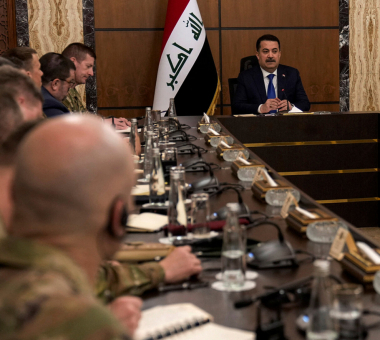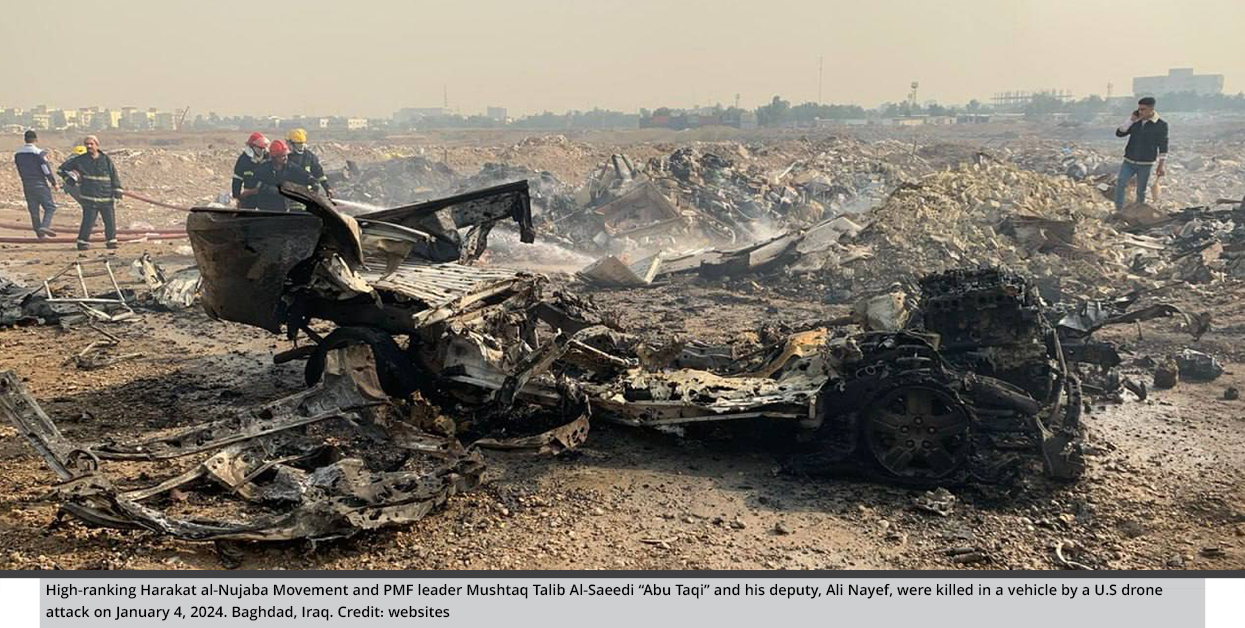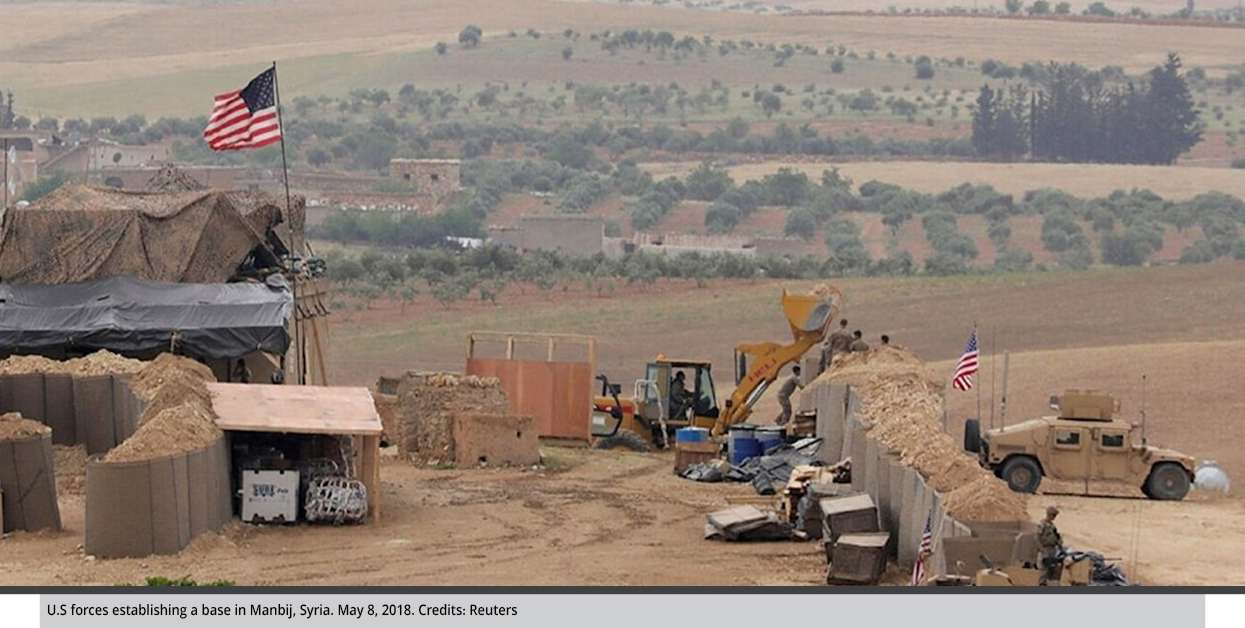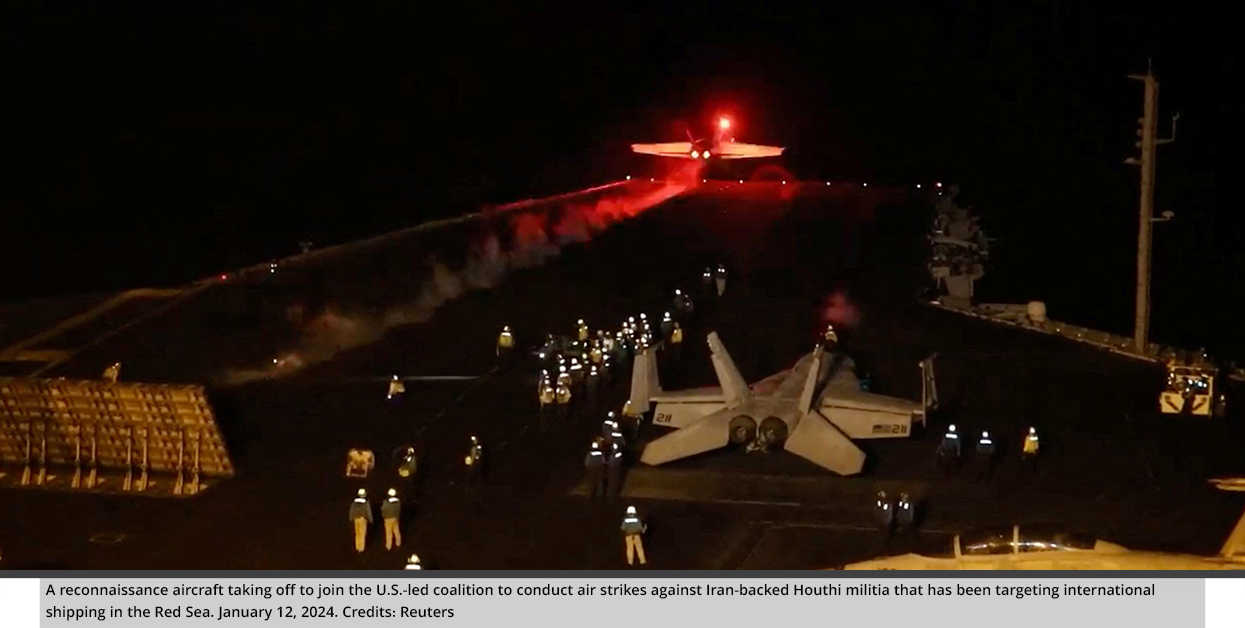U.S. Withdrawal from Iraq: A Containment of Escalation or an Open Invitation for an Escalation of Terrorism?
This policy analysis discusses the possibilities that may ensue from the U.S. withdrawal from Iraq and the position of the Iraqi government regarding this withdrawal. It also touches on the nature of future relations between Washington and Baghdad against the backdrop of attacks between armed factions in Iraq and U.S. forces.
by STRATEGIECS Team
- Release Date – Feb 22, 2024

Official talks began between Iraq and the United States that may lead to developing a roadmap and a timetable to conclude the mission of the Global Coalition against ISIS. Created on December 8, 2023, the U.S.-Iraq Higher Military Commission (HMC) held its first meeting January 27 and then resumed its meetings on February 11. These talks came after an escalation of conflict between U.S forces and armed factions in Iraq. The more than 156 attacks on U.S. forces in Iraq and Syria since October 7 last year has led to retaliatory strikes targeting the factions’ leaders and locations.
This series of strikes and counterstrikes revived old demands to end the mission of the Global Coalition to Defeat ISIS and to withdraw U.S. forces from Iraq. Specifically, these demands came from the Iraqi parliament, which called upon the U.S. government to implement the 2020 U.S. Senate and House joint resolution to repeal the authorizations for use of military force against Iraq.
How the War in Gaza Affects U.S.-Iraq Relations
The war in the Gaza Strip renewed the official and popular Iraqi demands for the withdrawal of U.S. and Global Coalition forces from the country. After a full year of calm in Iraq since the government of Iraqi Prime Minister Mohammed Al-Sudani assumed its duties on October 27, 2022, the Iraqi factions resumed their attacks against U.S. forces in Syria and Iraq as part of the response of the Iran-affiliated parties of the so-called “Unity of Arenas” to the war in Gaza. A new military faction, known as the “Islamic Resistance in Iraq” emerged in Iraq. It consists of a group of armed factions classified as terrorists by the U.S. State Department, including Kata’ib Hezbollah, the al-Nujaba Movement, and the Asa’ib Ahl al-Haq Movement. The Islamic Resistance claimed credit for most of the attacks against U.S. forces in Syria and Iraq, especially the drone attack against the U.S. “Tower 22” base, which killed three American soldiers on January 28, 2024.
In light of this escalation, fundamental contradictions have emerged between Iraq and the United States. Washington took deterrent measures to prevent its opponents from intensifying their attacks or carrying out qualitative strikes against American forces and interests by targeting the armed factions with retaliatory strikes, presenting such strikes as “self-defense.” In doing so, the United States complicated the Iraqi government’s ability to balance its relations between Washington and the armed factions. This is especially true since the attacks and retaliatory strikes escalated between the United States and the Iraqi factions.
The United States killed an official of the Harakat al-Nujaba Movement known as “Abu Taqi” and one of his companions on January 4, 2024, and then killed the leader of the Hezbollah Brigades, Wissam al-Saadi, on February 7, despite the suspension of the Movement’s attacks against American forces since January 31.

In fact, the Iraqi government considered the U.S. strikes as a violation of official bilateral agreements, especially the 2021 Strategic Framework Agreement in which the United States affirms respect for Iraq’s sovereignty, as well as a bypass of the non-combat role of U.S. forces in Iraq that began with the announcement of the end of the combat missions of the Global Coalition and its transition to an advisory and training mission to assist Iraqi forces in late 2021.
Baghdad has begun to believe that the costs of the U.S. presence will multiply with the intensification of domestic and Iranian pressure for the departure of the U.S. forces and the Iraqi government’s concern about the exacerbation of the crisis and the escalation of clashes inside Iraq.
Differing Positions on the Idea of a U.S. Withdrawal
The Iraqi demands for the departure of American and foreign forces are not new. Rather, they were revived by Iraqi public opinion after the war in the Gaza Strip and as Iraqi armed factions became involved in this war through their military activity in Iraq and Syria. Baghdad immediately realized the danger of escalation in its territory. The Iraqi government sought mediation between the United States and Iran to calm the tension between them and to prevent such tension from affecting Iraq. Equally important, the Iraqi government urged the armed factions to halt their attacks against U.S. forces.
However, the escalation was driven by different considerations of the parties within the Iran-supported Unity of Arenas. Iran seeks to exploit the circumstances of the war in the Gaza Strip to remove U.S. forces from the region (specifically from Iraq and Syria) on the premise that the unconditional U.S. support to Israel provides objective conditions to intensify military pressure against the United States. These pressures include creating an environment in which the American presence contain risks and threats that exceed the U.S gains and goals, according to Hezbollah Secretary-General Hassan Nazrallah, who noted on January 6 that “Iraq is facing a historic opportunity to get rid of the American occupation forces.”
Many forces inside Iraq, which are mainly concentrated in Shiite political forces, agree on this goal, especially the Coordination Framework (Iraq’s top political coalition for Iran-backed militias), and also the Sadrist Movement, whose leader Muqtada al-Sadr was one of the first after the war to demand the closure of the U.S. embassy and the exit of its forces from the country in October 2023.
However, al-Sadr’s call may be a double-edged sword for his Movement. On the one hand, the American exit would annul the justifications for the “resistance” discourse used by his rivals, who are relatively influential for their supporters and grassroots. But on the other hand, it supports their narrative that the U.S. forces left Iraq as a result of military pressure practiced by the armed factions on U.S. forces.
Nevertheless, there is a divergence in Iraqi positions on the issue of the U.S. presence. Some Kurdish forces that the United States has provided support to combat ISIS fear that such withdrawal will lead to the restoration of ISIS’s strength. In addition, the U.S. withdrawal from Iraq puts the Syrian Kurds in a state of uncertainty about the future of their relations with Washington and other actors in Syria. In addition, there are concerns among some Sunni areas liberated from ISIS that Iranian hegemony will increase over them.

The Result: Withdrawal or No Withdrawal?
The escalation of Iran and its allies has succeeded in putting the issue of the withdrawal of foreign and U.S forces on the agenda of U.S.-Iraqi relations. But the issue of withdrawal is still highly doubtful. The Iraqi government, which relies on the support of Iran’s allies and partners in the coalition of state administration, needs to ensure that the militants among them are neutralized against the U.S presence, and are not to be led by calls to accelerate the withdrawal of U.S. forces, especially as the Iraqi government recognizes the need for a U.S. security role in training as well as logistical and intelligence support in the fight against ISIS, as Prime Minister al-Sudani pointed out in an interview with The Wall Street Journal on January 15, 2023.
Therefore, the Iraqi government followed a balanced policy through which it demanded the withdrawal of U.S. forces, but at the same time it did not submit an official request to Washington to do so, as it aimed to calm the rising voices calling for the withdrawal of U.S. forces. At the same time, the Iraqi government did not surrender to Iranian pressures that do not align with Iraqi security interests. Hence, the Iraqi Ministry of Foreign Affairs issued a statement that was clear in describing the expected withdrawal process as a “gradual and deliberate reduction.”
For its part, the United States rejects any urgent withdrawal, as the Pentagon has previously denied that there will be an imminent withdrawal of American troops from Iraq. While the U.S. presence there exists mainly to combat ISIS, it also has other purposes related to Iran’s regional behavior and the expansion of armed factions both along the Iraqi-Syrian border and deeper inside the two countries.
With the United States responsible to its international allies and other countries inside the region, U.S. forces would not depart under pressure without taking into account the broader regional conditions that require the presence of its forces. This is especially true since the withdrawal negotiations come in light of the war in the Gaza Strip, which is an ominous sign to the region of more escalation at a time when U.S. forces are exerting intense pressure on the Houthis in the Red Sea. In short, now is not the time that U.S. forces want to show any signs of weakness toward their deterrence capability.

In light of this, both Iraq and the United States have chosen to conduct negotiations through the U.S.-Iraq High Military Commission (HMC). This has many implications, including:
- The two countries have chosen a specialized commission of military and defense experts to discuss a plan for withdrawal based on their professional assessment of three critical issues: the threats of ISIS, the surrounding security environment, and the capabilities of the Iraqi army. This is in contrast to the 2008 Strategic Framework Agreement that led to the U.S. withdrawal in 2011, which was forged through political channels and not based solely on security considerations.
- The ongoing negotiations are of great importance in framing the security relations between the United States and Iraq, and also in drawing future frameworks of such relations. The HMC emerged from the Joint Security Cooperation Dialogue held between the United States and Iraq in Washington on August 7 and 8, 2023, that brought together several military leaders from both countries, including Iraqi Defense Minister Thabet Al-Abbasi and U.S. Secretary of Defense Lloyd Austin. This means that bilateral negotiations are not limited to setting a timetable for withdrawal.
- Since the issues discussed by the HMC are of a security nature, the negotiations and their proceedings are shrouded in secrecy and have not been disseminated to the media or the public. The HMC has so far held two meetings.
- The tendency of the two countries to conduct their relations in formal and specialized committees indicates a mutual desire to maintain an advanced level of relations. In addition to the HMC, the High Coordinating Committee on Economic Cooperation is always convened under the 2008 Strategic Framework Agreement.
Finally, the negotiations between the United States and Iraq came against the backdrop of the escalation taking place in the region and Iraq, but the context and course of these negotiations are isolated from that escalation. The choice of the two countries to establish the HMC indicates their mutual need for a deliberated withdrawal that is not driven by political pressure nor in any way affects the Iraqi security environment or U.S. strategic goals. At the same time, the U.S. withdrawal should preserve the relations and common interests between the two countries. This is what al-Sudani’s government desires, given that the prime minister stressed that what is required is “the transition to bilateral relations with all coalition countries.”
However, the United States and Iraq are aware that the post-war situation in the Gaza Strip has become very risky and complicated for both the Iraqi government and the United States. Iraq has not witnessed any tit-for-tat attacks since February 7, 2023, apparently as a result of allowing the Iraqi government to reach withdrawal arrangements with Washington. However, the dynamics and components of a possible escalation remain. Any attempts to contain the escalation are accompanied by significant differences in calculations among all parties regarding the current situation, whether it be Iran, its allied Iraqi forces, the Iraqi government, or the United States.

STRATEGIECS Team
Policy Analysis Team
 العربية
العربية